Great Stuff!
I'm not hiding this under an LJ cut, because this almost is too good to be true! My brother and I used to stay up late to watch Playboy After Dark, in the hopes that we'd see people having sex on TV or at least the stray naked lady. That didn't happen, but Hef was so cool, and he had on such great guests. I remember watching Iron Butterfly live on the show, complete with mind-bending light effects! This is a must for every hipster on your list:)
by Billy Ingram
"I distinctly remember seeing Hugh Hefner starring in his own suave talk show in the late sixties called 'Playboy After Dark'. Any chance you've heard of it?"
- Jackson Arnold
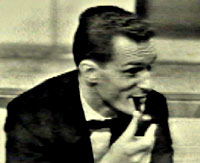
Playboy magazine, which began publishing in 1953, was enjoying robust sales in the ‘80s. To expand the empire, founder Hugh Hefner launched a subscription-based cable component, The Playboy Channel. It quickly became one of the first subscription cable TV success stories.
Not as well-known is the fact that there were two earlier attempts by Hefner to create a television spin-off of his famous magazine. While neither caught on in a big way, both were critical and audience hits with unique formats that presented timeless performances by some of the greatest comedians, jazz, soul, folk and be-bop artists of all time.
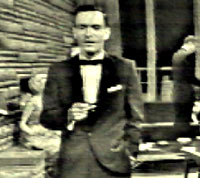
Hefner's first nationally televised series, Playboy's Penthouse, premiered on October 24, 1959. Produced in the studios of WBKB-TV in Chicago, the program was syndicated to a loose network of stations across the country that specifically signed up for the show.
The format was modelled on a hip, swinging bachelor party, the kind of bash where cool people lounged in their cocktail clothes exchanging bright ideas.
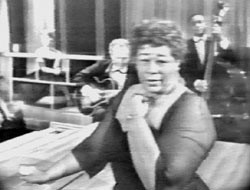
Beat poets, writers, comics, and musical immortals like Ella Fitzgerald, Cy Coleman (composer of the Playboy theme song), Nat "King" Cole, Sarah Vaughn, The Limelighters, and Harry Belafonte mingled in an impromptu fashion with Hef and his assembled party-goers.
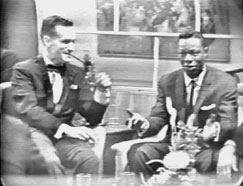
There had never been anything like Playboy's Penthouse on television. From a historical perspective, this was the first national program where whites and blacks sat down together and partied as equals.
Hef's first "Penthouse Party" (as the show was also known early on) featured raucous comedian Lenny Bruce, a controversial choice.
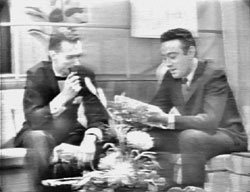
It was rare for any TV production to book the up and coming nightclub comic because of his rambling delivery and outspoken views on race, religion and politics. Hugh Hefner was making a point on his very first outing, tackling subjects never touched upon in 1950s television culture.
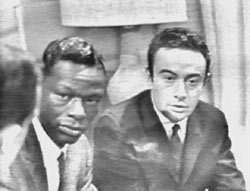
Playboy helped bring Lenny Bruce from the small clubs to the mass marketplace with this TV segment and through publishing Bruce's autobiography How To Talk Dirty and Influence People after serializing it in the magazine beginning in 1964.
Hefner and Lenny Bruce discussed the format of Playboy's Penthouse on that first program:
BRUCE: "This is a kind of a... an interesting party. You know, I first figured it would be like, sort of a TV, you know, a typical fake party. But it's got a good party feeling to it, with some pretty chicks, which is a good composite.
HEFNER: "Well, (we have) the girls and we serve real liquor... it does the trick."
BRUCE: "You think you'll get any objection to drinking on the show? I don't think I've ever seen that on a show."
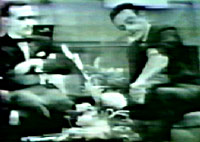
HEFNER: "Well, we'll find out. We hope not."
BRUCE: "That's what grooved me about the show. That it's an honest... it's actually a party. So whatever happens at a party, within, you know, limitations..."
HEFNER: "Well, (laughs) we're trying to build the personality of the show out of the magazine itself and make the thing a sort of a sophisticated weekly get together of the people that we dig and the people who dig us."
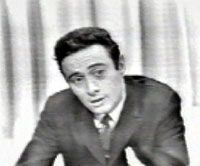
This show provided an opportunity for a larger audience to see and hear what Lenny Bruce had to say for himself, rather than read what other people were saying about him in the newspapers (especially after a series of obscenity and drug busts that began in 1961).
On August 3, 1966, Lenny Bruce was found dead on the floor of his Hollywood Hills home. The LAPD announced he had died of an overdose. Music producer Phil Spector called it "an overdose of police" - a strategy he may want to use for his upcoming murder trial.
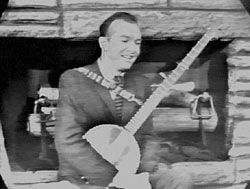
The musicians that dropped by usually engaged in conversation with Hef to start out, peppering their talk with musical asides; then an intimate and lengthy concert segment would follow. For instance, folk singer Pete Seeger talked extensively about the roots of popular music in the United States, singing some early and quaint examples of the art. Throughout his expansive musical discourse, Seeger took potshots at corruption in society, the quiz show scandals and the ubiquity of brand names.
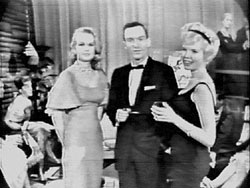
Hefner was not your typical slick TV host, he had a nervous, disarming quality that worked to the benefit of the proceedings. He was smart enough not to hire a professional to headline, revealing in a 1959 interview, "If we did the thing ourselves, and the viewers could meet me as a human being every week, then hopefully they would begin to discover, those people who did not read Playboy, well, son of a gun, this guy isn't a dirty old man."
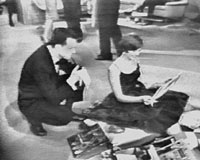
Playboy's Penthouse ran for two seasons (re-syndicated in 1963) and helped extend the magazine's image as a source of sophisticated, diverse entertainment. Shortly after filming the premier season's episodes, Hefner opened the first Playboy Club in Chicago and moved into the first Playboy Mansion.
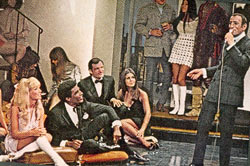
Skip ahead to January of 1969. With magazine sales topping 5.5 million a month, Hefner (then forty-two) again entered the television arena with Playboy After Dark, a 26-week color version of his earlier series.
Once again the party format was carried forward, with an elaborate $35,000 bachelor pad set built on a CBS Hollywood soundstage, complete with a den, sunken living room, and curvaceous bar. Twenty girls and nineteen guys (guess who got two girls) provided the atmosphere and mingled with the exceptional guest stars.
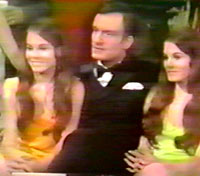
Playboy After Dark again had Cy Coleman's jazzy theme and once again viewers were given a chance to hear discussions on a wide variety of subjects that were taboo on other talk/variety shows, as well as showcasing entertainers shunned (or outright blacklisted) on the tube.
The program also provided a way for Hefner to get some face time with the magazine's growing audience. "Fame is as meaningful to me as fortune," was his revealing quote to the press in 1969.
Guest stars on Playboy After Dark (surrounded by the ubiquitous Playboy Bunnies) included Marvin Gaye, The Checkmates, improv group The Committee, Janis Ian, The Byrds, Buddy Greco, Shari Lewis (in her post-Lambchop, adult comic days), Pat Henry, and others.
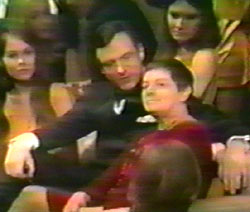
Lenny Bruce's eccentric mother, former stripper Sally Marr, appeared on the opening episode as part of a tribute to her son (who had died three years earlier). Included were clips of Lenny from the first episode of Playboy's Penthouse a decade earlier - almost as if to say, "The party's still on, welcome back!"
Sally Marr (who also had a nightclub act) went on to appear in several films including 'Harry and Tonto' (1974). In 1994, Joan Rivers portrayed her in the Broadway play ''Sally Marr - and Her Escorts,'' at the Helen Hayes Theater.
Ratings were high overall for Playboy After Dark but the show was cleared for broadcast in only twenty-three cities, not enough to ultimately warrant continuation. It was successful in attracting new magazine readers, however - sales of Playboy peaked at over seven million copies a month in 1971.
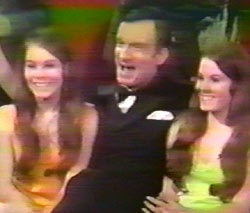
Ironically, while the Playboy name translated into viewers in the cities that ran the show, it made it difficult to get airplay in the midwest and south. Many stations couldn't carry the show because the brand name meant smut to older, more conservative audiences. The racially mixed guest list probably didn't help distribution in the south, even in 1969. (In Charlotte, NC, the show was listed in TV Guide as 'Hugh Hefner.' )
The television production provided an opportunity for Hef to get out of his Chicago digs and shake things up in Los Angeles. He enjoyed the experience so much, Hef decided to make LA his base of operations in 1971, purchasing the now-famous Playboy Mansion West in the Holmby Hills.
Like Batman changing Batcaves, Hefner became an LA party-scene fixture from that point on.
Hugh Hefner, ever modest, had this to say in 1969 about Playboy After Dark: "It's better than the Johnny Carson show or the Joey Bishop show and I do a better job hosting than Ed Sullivan does."
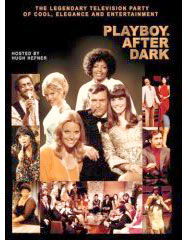
Perhaps Hef can do us all a favor and revive the show again - in 2006, he released a 'best-of' collection of the Playboy After Dark programs on DVD.
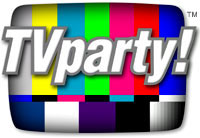

NEW! Now on DVD!
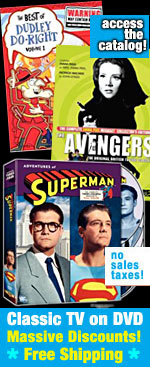
Access our
Classic TV
Catalog Now!
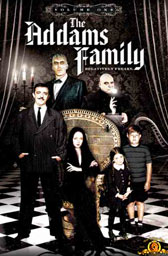
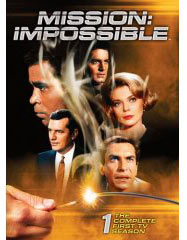
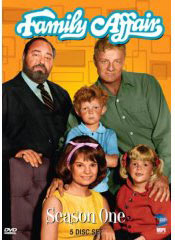
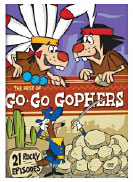
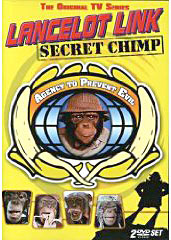
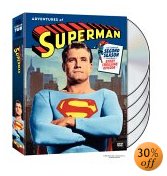
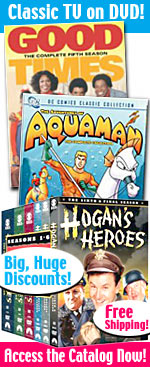
Catalog of all
Classic TV Shows
on DVD
ClassicTV-DVDs.com
Hard-to-find Classic TV
Shows on DVD!
NEW!
TVparty Classic
TV Blog!

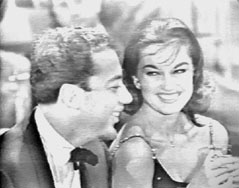
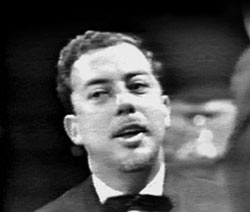
The late, great Cy Coleman
GET THESE
NOW ON DVD!
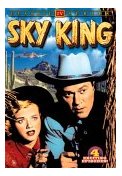
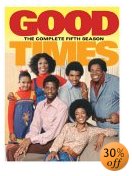
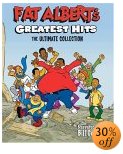
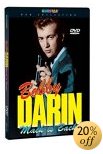


Find Classic TV Ads On
VHS/DVD. 45% Off!
www.80sCommercials.com
by Billy Ingram
"I distinctly remember seeing Hugh Hefner starring in his own suave talk show in the late sixties called 'Playboy After Dark'. Any chance you've heard of it?"
- Jackson Arnold

Playboy magazine, which began publishing in 1953, was enjoying robust sales in the ‘80s. To expand the empire, founder Hugh Hefner launched a subscription-based cable component, The Playboy Channel. It quickly became one of the first subscription cable TV success stories.
Not as well-known is the fact that there were two earlier attempts by Hefner to create a television spin-off of his famous magazine. While neither caught on in a big way, both were critical and audience hits with unique formats that presented timeless performances by some of the greatest comedians, jazz, soul, folk and be-bop artists of all time.

Hefner's first nationally televised series, Playboy's Penthouse, premiered on October 24, 1959. Produced in the studios of WBKB-TV in Chicago, the program was syndicated to a loose network of stations across the country that specifically signed up for the show.
The format was modelled on a hip, swinging bachelor party, the kind of bash where cool people lounged in their cocktail clothes exchanging bright ideas.

Beat poets, writers, comics, and musical immortals like Ella Fitzgerald, Cy Coleman (composer of the Playboy theme song), Nat "King" Cole, Sarah Vaughn, The Limelighters, and Harry Belafonte mingled in an impromptu fashion with Hef and his assembled party-goers.

There had never been anything like Playboy's Penthouse on television. From a historical perspective, this was the first national program where whites and blacks sat down together and partied as equals.
Hef's first "Penthouse Party" (as the show was also known early on) featured raucous comedian Lenny Bruce, a controversial choice.

It was rare for any TV production to book the up and coming nightclub comic because of his rambling delivery and outspoken views on race, religion and politics. Hugh Hefner was making a point on his very first outing, tackling subjects never touched upon in 1950s television culture.

Playboy helped bring Lenny Bruce from the small clubs to the mass marketplace with this TV segment and through publishing Bruce's autobiography How To Talk Dirty and Influence People after serializing it in the magazine beginning in 1964.
Hefner and Lenny Bruce discussed the format of Playboy's Penthouse on that first program:
BRUCE: "This is a kind of a... an interesting party. You know, I first figured it would be like, sort of a TV, you know, a typical fake party. But it's got a good party feeling to it, with some pretty chicks, which is a good composite.
HEFNER: "Well, (we have) the girls and we serve real liquor... it does the trick."
BRUCE: "You think you'll get any objection to drinking on the show? I don't think I've ever seen that on a show."

HEFNER: "Well, we'll find out. We hope not."
BRUCE: "That's what grooved me about the show. That it's an honest... it's actually a party. So whatever happens at a party, within, you know, limitations..."
HEFNER: "Well, (laughs) we're trying to build the personality of the show out of the magazine itself and make the thing a sort of a sophisticated weekly get together of the people that we dig and the people who dig us."

This show provided an opportunity for a larger audience to see and hear what Lenny Bruce had to say for himself, rather than read what other people were saying about him in the newspapers (especially after a series of obscenity and drug busts that began in 1961).
On August 3, 1966, Lenny Bruce was found dead on the floor of his Hollywood Hills home. The LAPD announced he had died of an overdose. Music producer Phil Spector called it "an overdose of police" - a strategy he may want to use for his upcoming murder trial.

The musicians that dropped by usually engaged in conversation with Hef to start out, peppering their talk with musical asides; then an intimate and lengthy concert segment would follow. For instance, folk singer Pete Seeger talked extensively about the roots of popular music in the United States, singing some early and quaint examples of the art. Throughout his expansive musical discourse, Seeger took potshots at corruption in society, the quiz show scandals and the ubiquity of brand names.

Hefner was not your typical slick TV host, he had a nervous, disarming quality that worked to the benefit of the proceedings. He was smart enough not to hire a professional to headline, revealing in a 1959 interview, "If we did the thing ourselves, and the viewers could meet me as a human being every week, then hopefully they would begin to discover, those people who did not read Playboy, well, son of a gun, this guy isn't a dirty old man."

Playboy's Penthouse ran for two seasons (re-syndicated in 1963) and helped extend the magazine's image as a source of sophisticated, diverse entertainment. Shortly after filming the premier season's episodes, Hefner opened the first Playboy Club in Chicago and moved into the first Playboy Mansion.

Skip ahead to January of 1969. With magazine sales topping 5.5 million a month, Hefner (then forty-two) again entered the television arena with Playboy After Dark, a 26-week color version of his earlier series.
Once again the party format was carried forward, with an elaborate $35,000 bachelor pad set built on a CBS Hollywood soundstage, complete with a den, sunken living room, and curvaceous bar. Twenty girls and nineteen guys (guess who got two girls) provided the atmosphere and mingled with the exceptional guest stars.

Playboy After Dark again had Cy Coleman's jazzy theme and once again viewers were given a chance to hear discussions on a wide variety of subjects that were taboo on other talk/variety shows, as well as showcasing entertainers shunned (or outright blacklisted) on the tube.
The program also provided a way for Hefner to get some face time with the magazine's growing audience. "Fame is as meaningful to me as fortune," was his revealing quote to the press in 1969.
Guest stars on Playboy After Dark (surrounded by the ubiquitous Playboy Bunnies) included Marvin Gaye, The Checkmates, improv group The Committee, Janis Ian, The Byrds, Buddy Greco, Shari Lewis (in her post-Lambchop, adult comic days), Pat Henry, and others.

Lenny Bruce's eccentric mother, former stripper Sally Marr, appeared on the opening episode as part of a tribute to her son (who had died three years earlier). Included were clips of Lenny from the first episode of Playboy's Penthouse a decade earlier - almost as if to say, "The party's still on, welcome back!"
Sally Marr (who also had a nightclub act) went on to appear in several films including 'Harry and Tonto' (1974). In 1994, Joan Rivers portrayed her in the Broadway play ''Sally Marr - and Her Escorts,'' at the Helen Hayes Theater.
Ratings were high overall for Playboy After Dark but the show was cleared for broadcast in only twenty-three cities, not enough to ultimately warrant continuation. It was successful in attracting new magazine readers, however - sales of Playboy peaked at over seven million copies a month in 1971.

Ironically, while the Playboy name translated into viewers in the cities that ran the show, it made it difficult to get airplay in the midwest and south. Many stations couldn't carry the show because the brand name meant smut to older, more conservative audiences. The racially mixed guest list probably didn't help distribution in the south, even in 1969. (In Charlotte, NC, the show was listed in TV Guide as 'Hugh Hefner.' )
The television production provided an opportunity for Hef to get out of his Chicago digs and shake things up in Los Angeles. He enjoyed the experience so much, Hef decided to make LA his base of operations in 1971, purchasing the now-famous Playboy Mansion West in the Holmby Hills.
Like Batman changing Batcaves, Hefner became an LA party-scene fixture from that point on.
Hugh Hefner, ever modest, had this to say in 1969 about Playboy After Dark: "It's better than the Johnny Carson show or the Joey Bishop show and I do a better job hosting than Ed Sullivan does."

Perhaps Hef can do us all a favor and revive the show again - in 2006, he released a 'best-of' collection of the Playboy After Dark programs on DVD.


NEW! Now on DVD!

Access our
Classic TV
Catalog Now!







Catalog of all
Classic TV Shows
on DVD
ClassicTV-DVDs.com
Hard-to-find Classic TV
Shows on DVD!
NEW!
TVparty Classic
TV Blog!



The late, great Cy Coleman
GET THESE
NOW ON DVD!






Find Classic TV Ads On
VHS/DVD. 45% Off!
www.80sCommercials.com